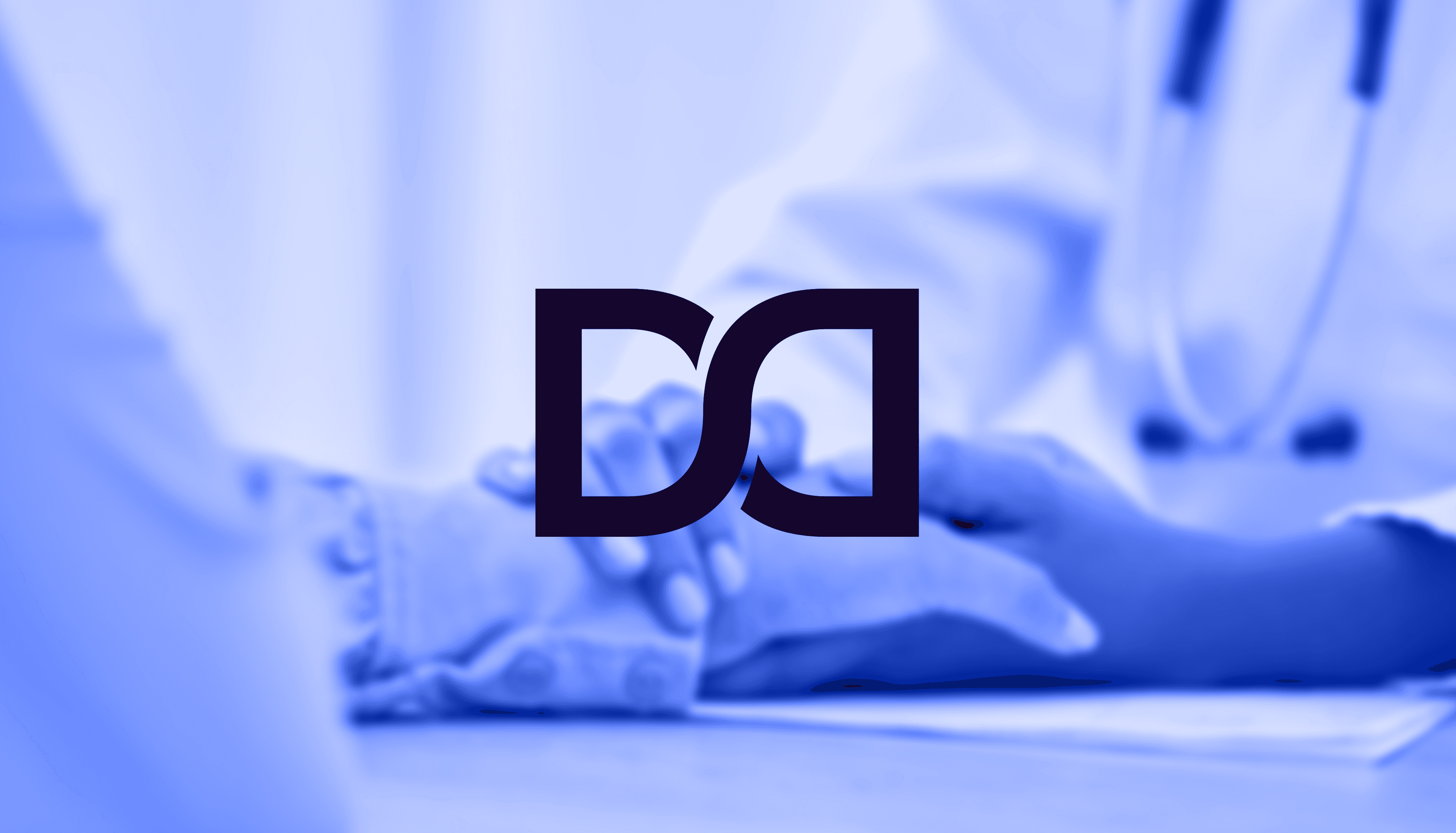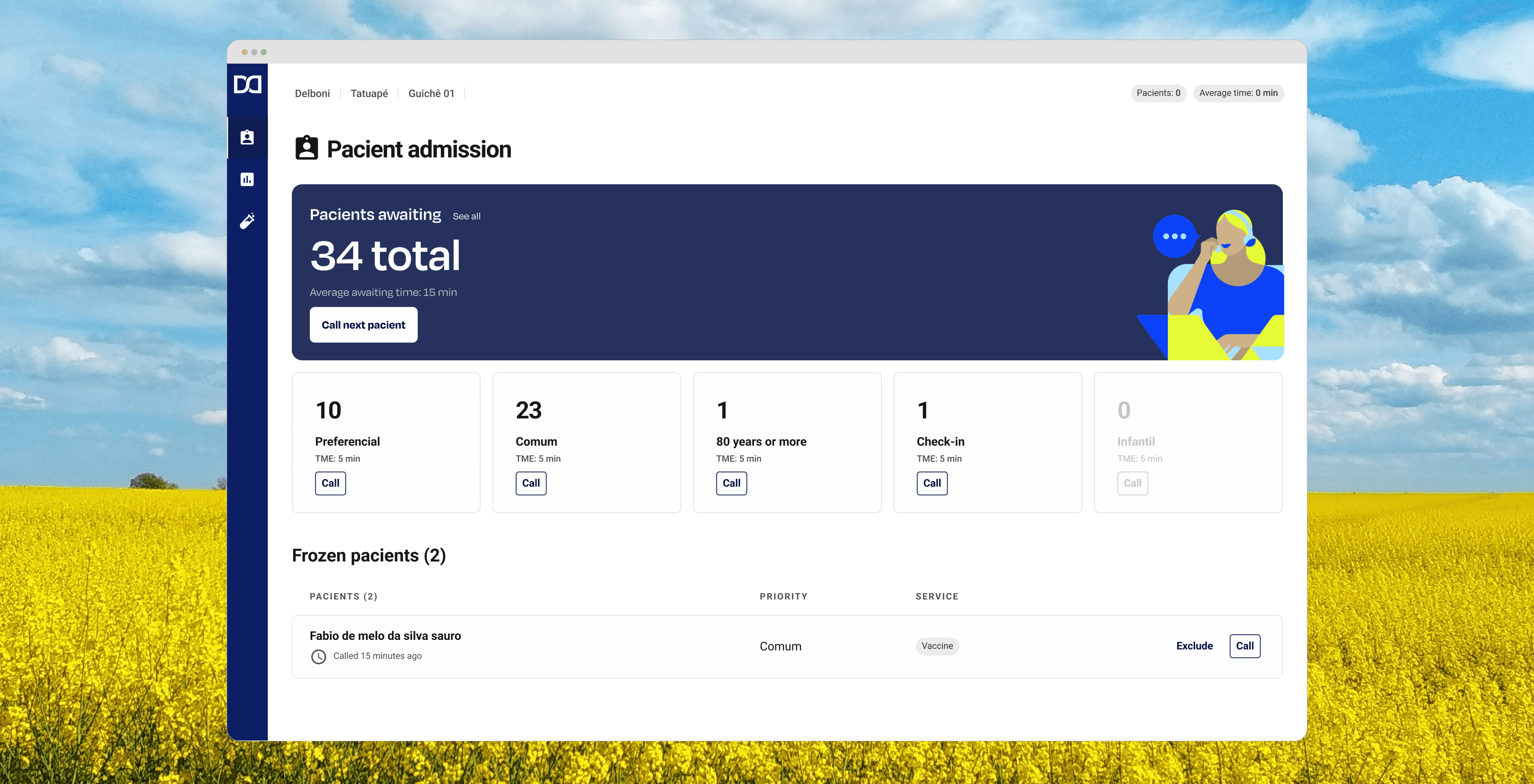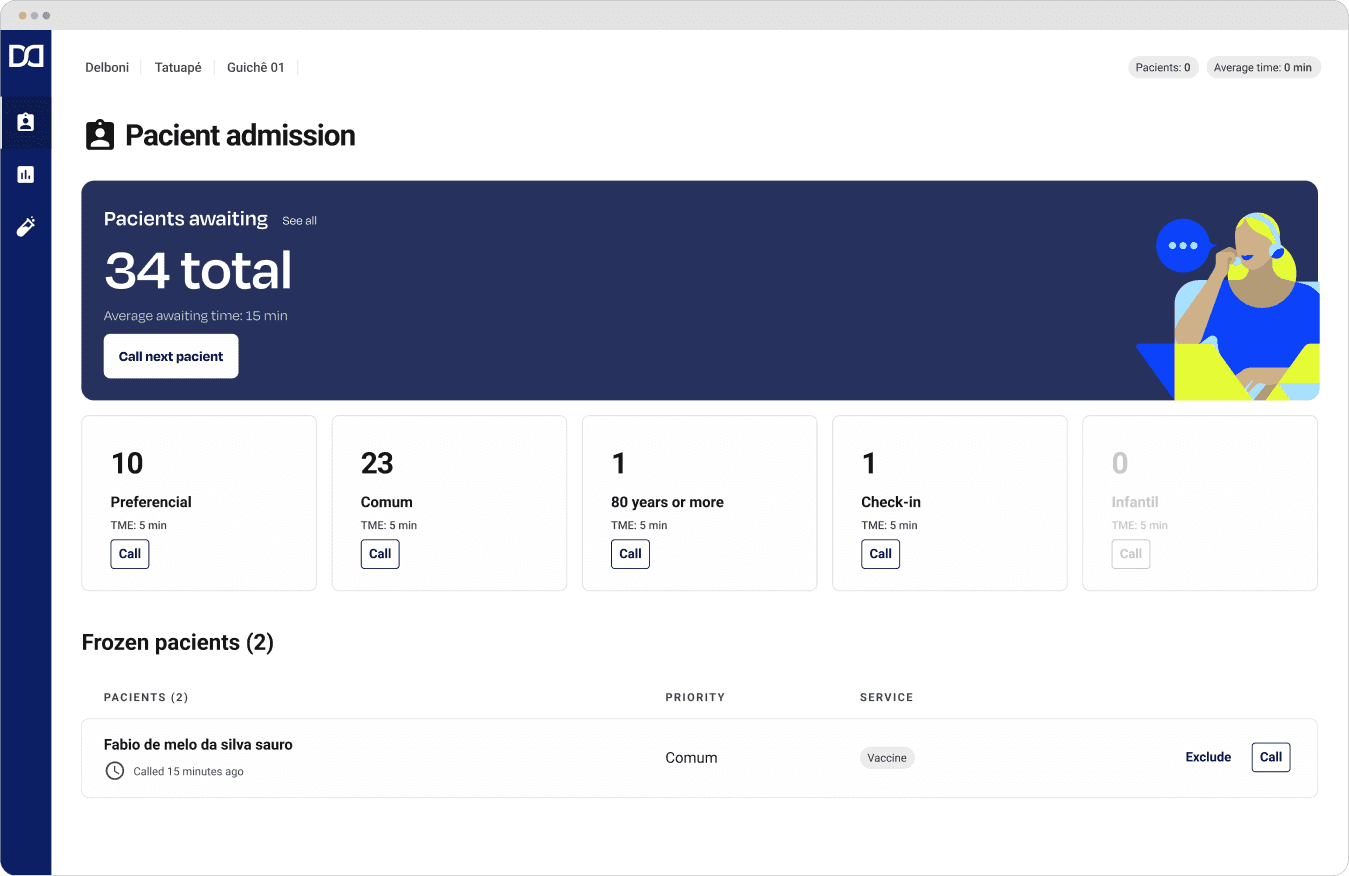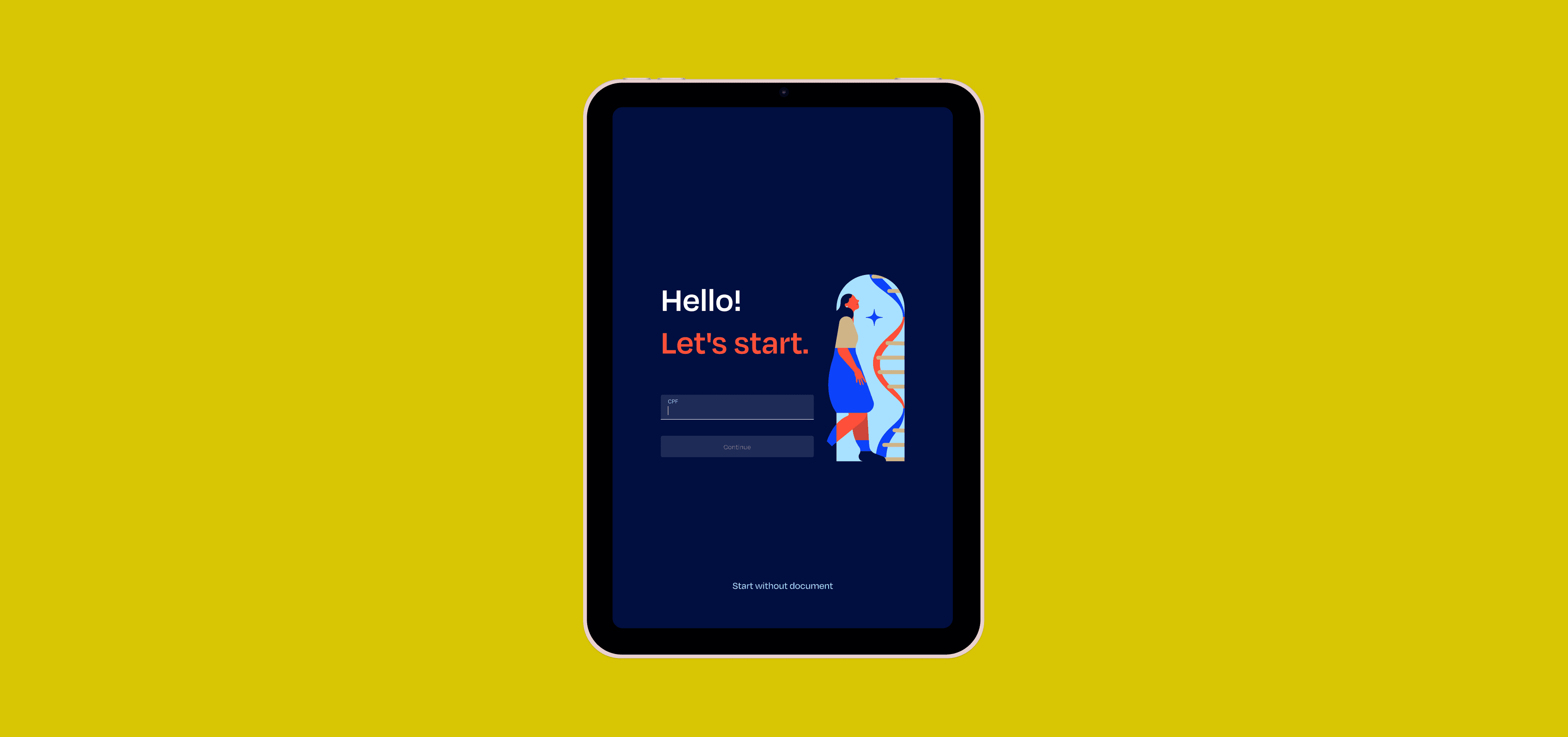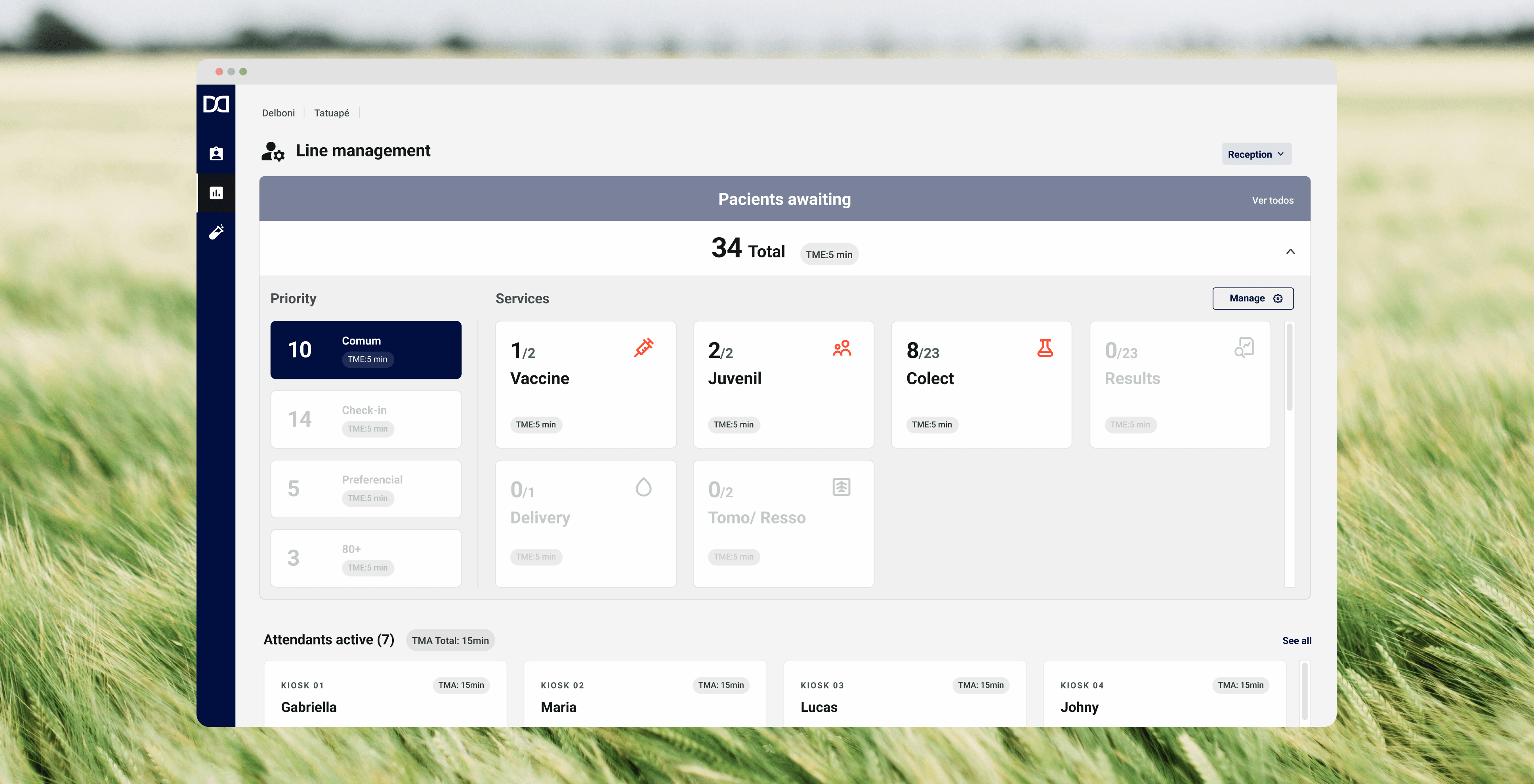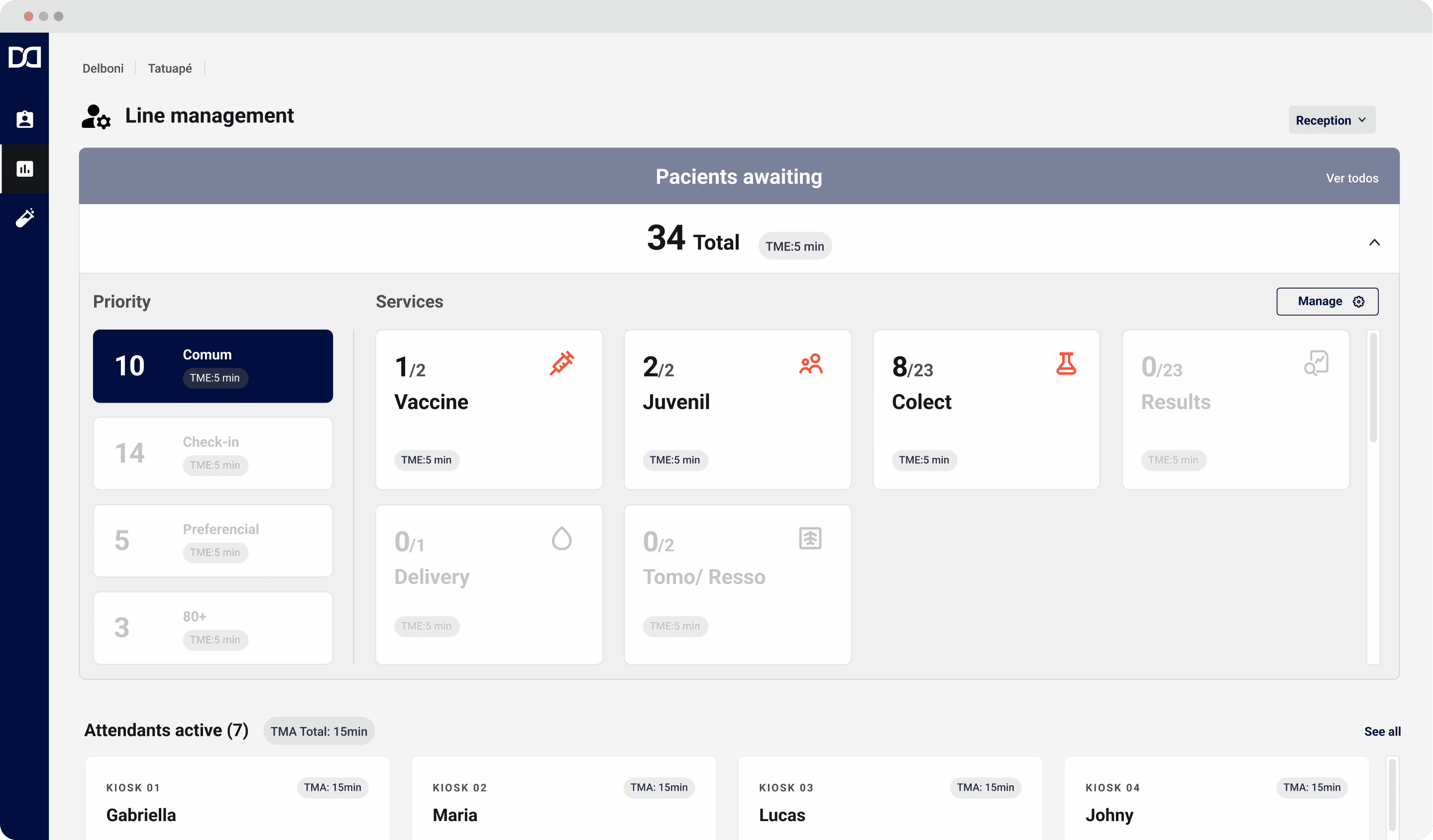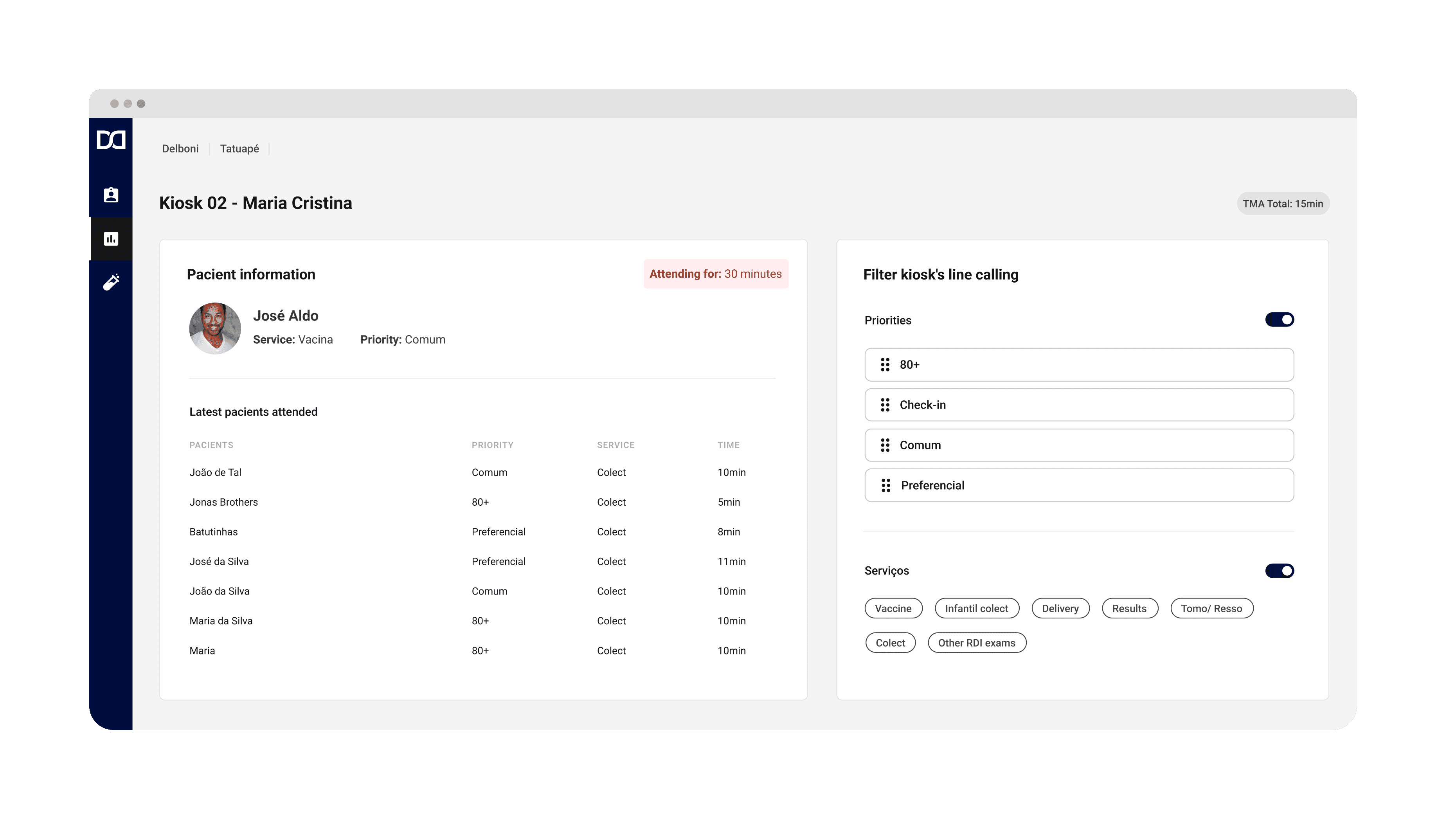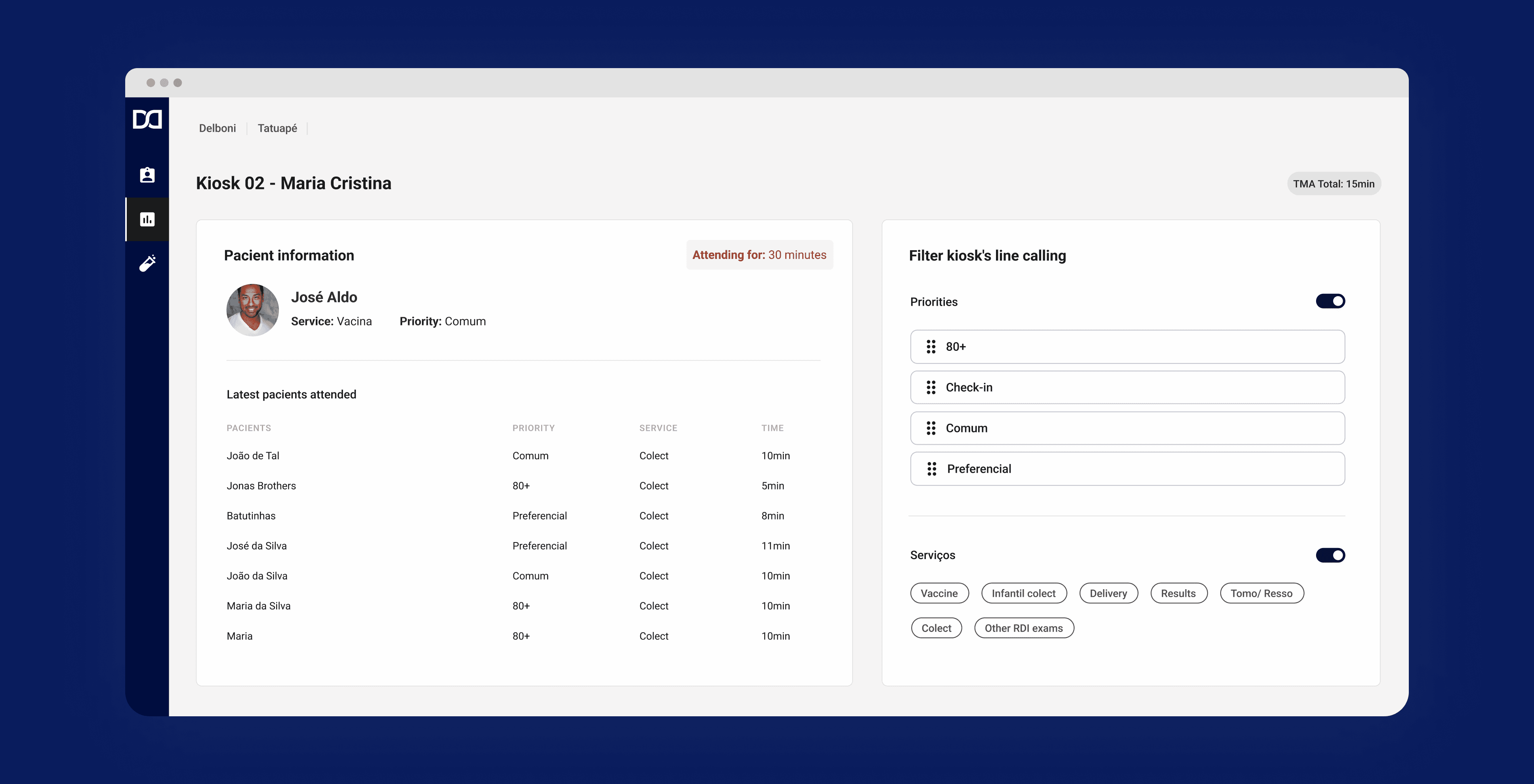2020 - 2022
|
Health Tech
-
Backoffice
Context and Challenge.
Between 2020 and 2022, I worked as the lead designer for three different teams simultaneously. These teams were part of a tribe called "Jornada da Unidade" (Unit Journey) and were responsible for enhancing the patient experience across laboratory units throughout Brazil.
UX Research
For several months, I observed the daily routines of patients and nurses to identify pain points and business opportunities that intersected with the overall journey.
Upon arrival at the laboratory, patients take a ticket with a unique number.
Await #1
The patient waits to be called via a password display panel.
Application
When called, the patient is registered in the system by a receptionist.
Await #2
After registration, the patient queues for their exams.
Exam
Nurses call the patients and record exam details in a separate system.
The mapping evolved into a Service Blueprint with multiple layers of complexity, considering various actors (internal and external) and technologies that influenced the journey.
The purpose of this artifact was to assist the team in decision-making and roadmap prioritization.
It became a guiding tool for the team in long-term planning, reducing solution overlaps and frequent roadmap replanning.
UX/UI
Development of an integrated queue system to streamline the workflow for attendants and improve the tracking of patient progress throughout their journey. The system provided real-time insights, allowing better coordination and enhancing the overall efficiency of operations.
The system was composed of two products:
Attendant Channel - Patient registration system.
Tracking - Queue organization and management system.
Goal
Creating an integrated product ecosystem for managing queues and patient registration in laboratories, designed to be scalable and user-friendly.
The primary success metric was the service time and duration of stay at the unit, as this was directly linked to our NPS.
Outcome
A system that allowed us to monitor patients within the laboratories, enabled by the integration of two interconnected products.
With the integration of these products, the examination queues became intelligent, reducing both wait and service times.
UX/UI
The goal of this project was to create a system that allowed each unit to have autonomy in defining its own waiting and service rules.
To achieve this, we developed a system for managing queues, services, and staff.
Goal
Enable unit managers to have full autonomy to organize unit queues quickly and flexibly.
Create a management system for laboratories that allowed managers to quickly obtain a comprehensive view of the situation at each unit.
Outcome
With the new system, managers who previously had to rely on manual methods to address logistical queue issues in the old system could now resolve these challenges seamlessly.
This not only reduced the workload associated with previously necessary tasks but also allowed managers to focus on more strategic and critical responsibilities. Furthermore, the system offered a comprehensive overview of all activities within the unit—an invaluable capability that was previously unavailable.
© Made by Mosk Design/ 2023
